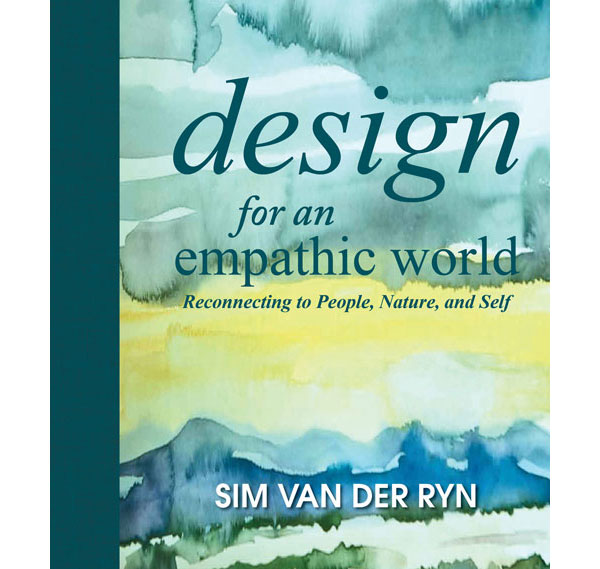
Author: Sim Van Der Ryn (Island Press, 2013)
I consider myself an empathic person; someone who spends his time worrying about the welfare of others, those I haven’t met, those who don’t exist on this planet yet, no matter of the circumstance surrounding the individual(s). As I read through Sim Van Der Ryn‘s Design for an Empathic World, I slowed down, even before he made it clear this was a quality to practice. I dampened my pace for the sheer fact that the book demands a respect of calmness, of putting aside the pesky, trivial thoughts in your head. Reading it was meditative on its own, regardless of some of the lessons within, as the fluidity of the pieces were just as important as their validity.
The forward of the book—A Sustained Awakening of the Human Heart—is truly a testament to the purpose of the entire text, a philosophy strongly upheld and placed without struggle in front of the reader for their recognition. Beyond just being a standard book, a fantastic journey through ecological design and sustainability by a leading voice, it was also a personal reflection (something clearly evident in Chapter 6 entitled, Journey to the Inner Self and Outer World) which make the reader question ones core beliefs and values, beyond just ethical practice, when designing. As such, the book fundamentally asks who one is as a human being?
It was fitting that shortly before reading the book, my wife and I had begun a conversation about the 1920’s and 30’s and how, during that time, electric railways dominated many large American cities. We discussed the well-known story of how GM, Standard Oil, Philips Petroleum, and Firestone had gained control of almost all of these streetcars and had them shut down: an act largely believed to push people to buy their own vehicle or take a bus powered by fossil fuels (and Firestone tires). This is a popular tale of greedy, anti-empathetic behaviour, and we now sit in a hotbed of concerns related to climate change, energy shortages and dwindling resources, as a result.
It is within this context, that Sim Van Der Ryn drives his point home. As he discusses Governor Reagan calling in the National Guard on students at Berkley for coming together and building a park, on land which was considered private property, one begins to understand that at times, those privileged few can forget about those less fortunate…and that the decision to think without empathy, can cause severe consequences years later. Van Der Ryn, similarly, speaks to the pitting of design students against each other in studios, and how this breeds feelings of mistrust and a drive to be the best, while accepting all the collateral damage that may accompany your decisions. From a design perspective, can a work ever really be empathic enough? Can we not always do more for our fellow human?
It is worth mentioning that there is a portion of the book that speaks about yoga and spirituality—attempting to make the link between yoga, spirituality, and an individual’s level of empathy. While I do understand that the author was merely trying to provide a road map to finding the inner-self, the true message became slightly muddled for me in loose spiritual talk.
I cannot complain, however, as the other 98% of the book was nothing but heart-warming stories of good being done. I thoroughly enjoyed a passage near the end of the book, for example, where the author talks about insatiable modern desire for connectivity and speed via technology—something that seems to be creating a chasm between us as human beings. He states that “our eyes dart around, but are we truly seeing? With all our speedy need to get on with the next thing, we never catch up. Are we ever truly present? We’re connected but how, to whom, what, why?” Finally he adds the piece that sums everything up for me:
“To be present is to be gifted with the simple pleasures of peace and quiet, which seem the rarest of commodities in our present environment.”
In this fast paced, digital world, I would argue that living and doing for the common good is far more rewarding and influential in life than living for oneself. For those of us who shape the built environment, we have the responsibility of creating a humane platform that can enrich our lives, not detract from it. Designing for an Empathic World truly understands this concept, and drives it home with grace and elegance.
***
Jeremy Senko is happily lost in the world of theoretical architecture and design. He is forever a student at heart, consistently reading, experiencing and learning about the world he inhabits. More specifically, he recently completed his Bachelor of Interior Design at Kwantlen Polytechnic University, where he pushed the limits (and the patience) of his professors.

